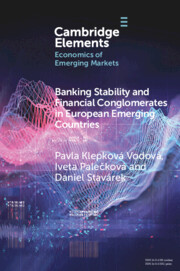Refine search
Actions for selected content:
35 results
7 - Language Ideologies of Prestige
- from Part II - Constructing Languages through Discourses on Belonging, Prestige, and Materiality
-
- Book:
- Liquid Languages
- Published online:
- 28 July 2025
- Print publication:
- 14 August 2025, pp 126-159
-
- Chapter
- Export citation
9 - Public English
- from Part II - Constructing Languages through Discourses on Belonging, Prestige, and Materiality
-
- Book:
- Liquid Languages
- Published online:
- 28 July 2025
- Print publication:
- 14 August 2025, pp 195-224
-
- Chapter
- Export citation
10 - Liquid Languages
- from Part III - Theoretical Conclusions
-
- Book:
- Liquid Languages
- Published online:
- 28 July 2025
- Print publication:
- 14 August 2025, pp 227-239
-
- Chapter
- Export citation
Chapter 2 - Derivatives, Market Liquidity, and Infrastructural Finance
- from Part I - Conceptual Approaches
-
-
- Book:
- The Cambridge Global Handbook of Financial Infrastructure
- Published online:
- 21 May 2025
- Print publication:
- 05 June 2025, pp 13-25
-
- Chapter
-
- You have access
- Open access
- HTML
- Export citation
Compensation schemes, liquidity provision, and asset prices: an experimental analysis
-
- Journal:
- Experimental Economics / Volume 20 / Issue 2 / June 2017
- Published online by Cambridge University Press:
- 14 March 2025, pp. 481-505
-
- Article
- Export citation
Chapter 7 - Ireland, Literature, and the Blue Humanities
- from Part II - Planets
-
-
- Book:
- Transnationalism in Irish Literature and Culture
- Published online:
- 13 November 2024
- Print publication:
- 14 November 2024, pp 135-150
-
- Chapter
- Export citation
Public debt as private liquidity: the Poincaré experience (1926–1929)
-
- Journal:
- Financial History Review / Volume 30 / Issue 3 / December 2023
- Published online by Cambridge University Press:
- 22 January 2024, pp. 308-329
-
- Article
- Export citation
10 - Network Competition
- from Part III - Networks
-
- Book:
- Digital Innovation Strategy
- Published online:
- 21 December 2023
- Print publication:
- 21 December 2023, pp 129-139
-
- Chapter
- Export citation
Three liquid assets
-
- Journal:
- Macroeconomic Dynamics / Volume 28 / Issue 3 / April 2024
- Published online by Cambridge University Press:
- 11 May 2023, pp. 675-698
-
- Article
-
- You have access
- Open access
- HTML
- Export citation
Financialisation and labour in the Australian commercial construction industry
-
- Journal:
- The Economic and Labour Relations Review / Volume 28 / Issue 4 / December 2017
- Published online by Cambridge University Press:
- 01 January 2023, pp. 500-518
-
- Article
- Export citation

Banking Stability and Financial Conglomerates in European Emerging Countries
-
- Published online:
- 16 December 2022
- Print publication:
- 19 January 2023
-
- Element
- Export citation
7 - Finance
-
- Book:
- Macroeconomics for Emerging East Asia
- Published online:
- 18 November 2022
- Print publication:
- 01 December 2022, pp 109-133
-
- Chapter
- Export citation
A simple approach to estimate long-term interest rates
-
- Journal:
- Journal of Pension Economics & Finance / Volume 23 / Issue 3 / July 2024
- Published online by Cambridge University Press:
- 20 October 2022, pp. 413-437
-
- Article
- Export citation
4 - Promoting the Use of PHR by Citizens and Physicians
- from Part I - Platforms, Apps and Digital Health
-
-
- Book:
- AI in eHealth
- Published online:
- 08 September 2022
- Print publication:
- 15 September 2022, pp 87-122
-
- Chapter
- Export citation
8 - Bank Regulation and Supervision
- from Part IV - Banking Regulation and Supervision in Hong Kong
-
- Book:
- A Regulatory Design for Financial Stability in Hong Kong
- Published online:
- 25 August 2022
- Print publication:
- 01 September 2022, pp 141-167
-
- Chapter
- Export citation
6 - Conceptualizing Financial Stability during Financial Crises
- from Part III - Contemporary Regulatory and Supervisory Approaches
-
- Book:
- A Regulatory Design for Financial Stability in Hong Kong
- Published online:
- 25 August 2022
- Print publication:
- 01 September 2022, pp 93-118
-
- Chapter
- Export citation
Does housing liquidity matter? Housing property rights and labour market participation of older migrants in China
-
- Journal:
- Ageing & Society / Volume 43 / Issue 11 / November 2023
- Published online by Cambridge University Press:
- 16 February 2022, pp. 2673-2699
- Print publication:
- November 2023
-
- Article
- Export citation
Chapter 28 - The Archipelago
- from VI - Critical Contexts
-
-
- Book:
- Seamus Heaney in Context
- Published online:
- 15 March 2021
- Print publication:
- 01 April 2021, pp 304-314
-
- Chapter
- Export citation
10 - European Banks
- from Part III - Financial Institutions
-
- Book:
- Financial Markets and Institutions
- Published online:
- 26 April 2020
- Print publication:
- 30 April 2020, pp 298-337
-
- Chapter
- Export citation
5 - Exchange Rates, Capital Flows and the Financial Cycle
-
-
- Book:
- Promoting Global Monetary and Financial Stability
- Published online:
- 10 April 2020
- Print publication:
- 30 April 2020, pp 168-205
-
- Chapter
- Export citation
